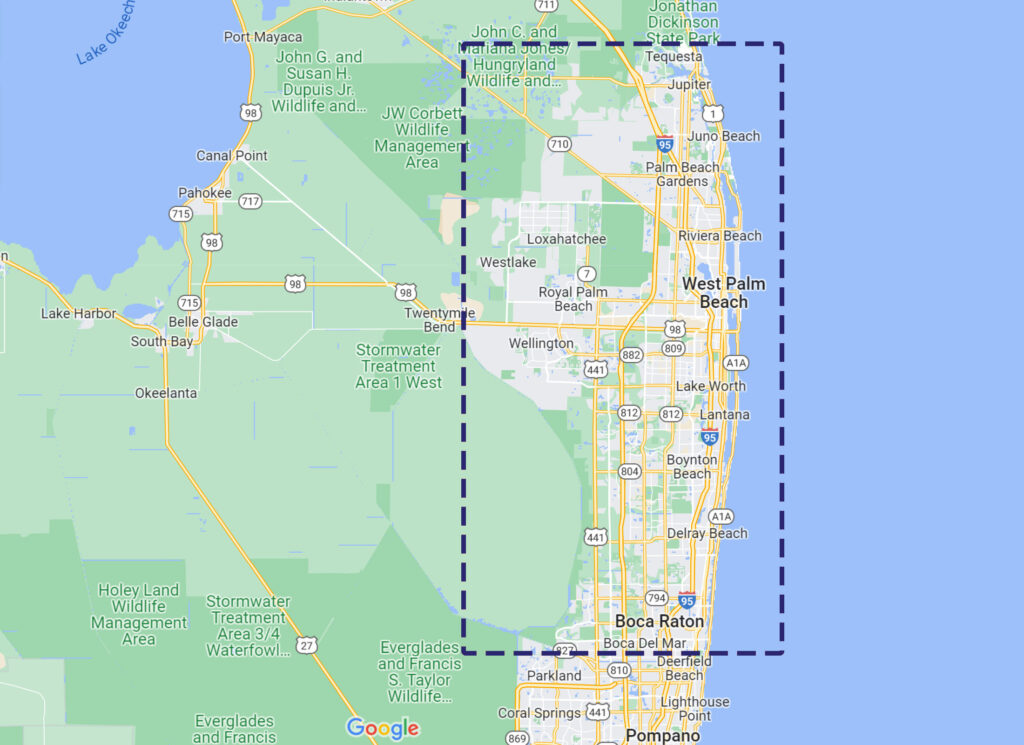
Can Chlorine Harm Your Pet? Understanding Pool Chemicals and Pet Safety
Warm weather brings pool season — and for many families, that includes letting the dog join in on the fun. But a common concern among pet owners is whether chlorine
Maintaining the proper water chemistry in your swimming pool is crucial to ensure safe, healthy, and comfortable swimming conditions. Balancing pool chemicals refers to maintaining the optimal levels of various chemical elements, including pH, chlorine, alkalinity, and calcium hardness, within the recommended ranges.
This page will cover the basics of water chemistry balancing, signs of imbalance, and steps to take to keep your pool’s water balanced.
All processes are carried out according to Florida State’s public swimming pool guidelines for public health.
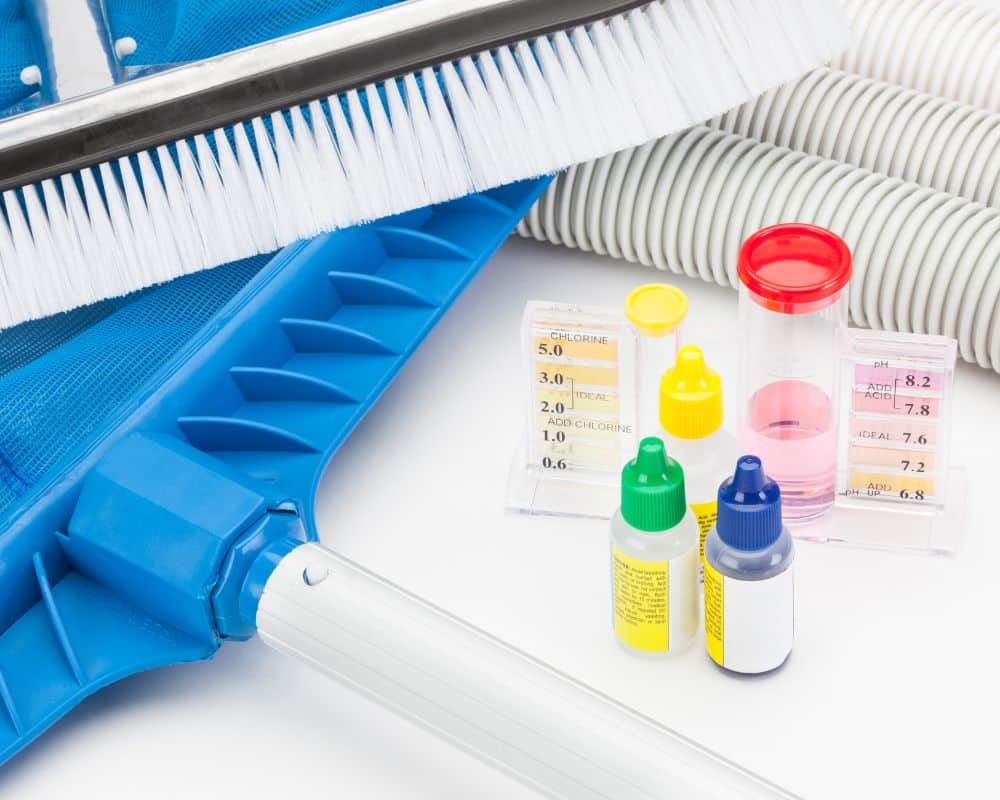
Water chemistry balancing is adjusting the levels of various chemicals in your pool water to ensure they are within the recommended range. This includes pH levels, alkalinity, calcium hardness, and chlorine levels.
A well-balanced pool should have pH levels between 7.2 and 7.8 and total alkalinity between 80-120 ppm (parts per million). The calcium hardness is between 200-400 ppm, and chlorine levels are between 1-3 ppm.
Balancing your pool’s water chemistry is crucial for several reasons:
Learn more about the benefits of professional pool maintenance on our blog.
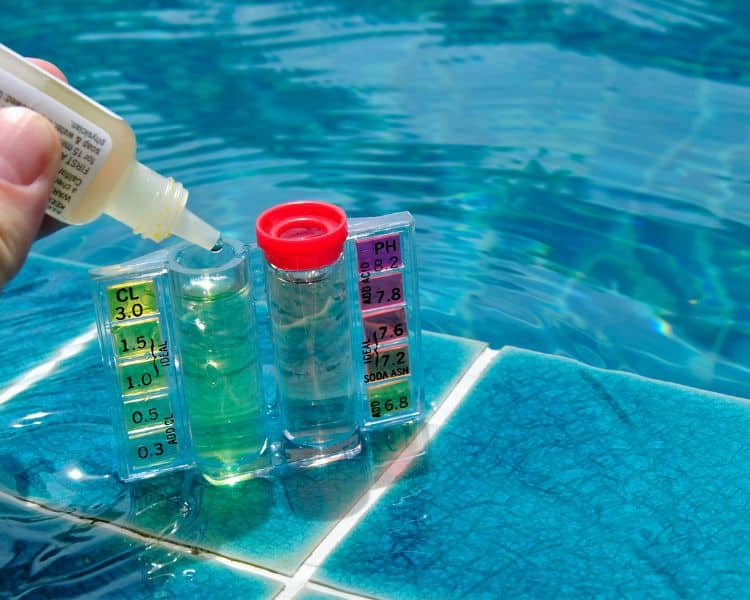
pH levels in your pool should be between 7.2 and 7.8. A pH level that is too high or too low can cause skin irritation and eye discomfort, making the water cloudy. High pH levels can also reduce the effectiveness of chlorine, making it harder to keep your pool clean and sanitary.
You can add sodium carbonate (soda ash) to raise the pH level. You can also add muriatic acid or sodium bisulfate in order to lower the pH.
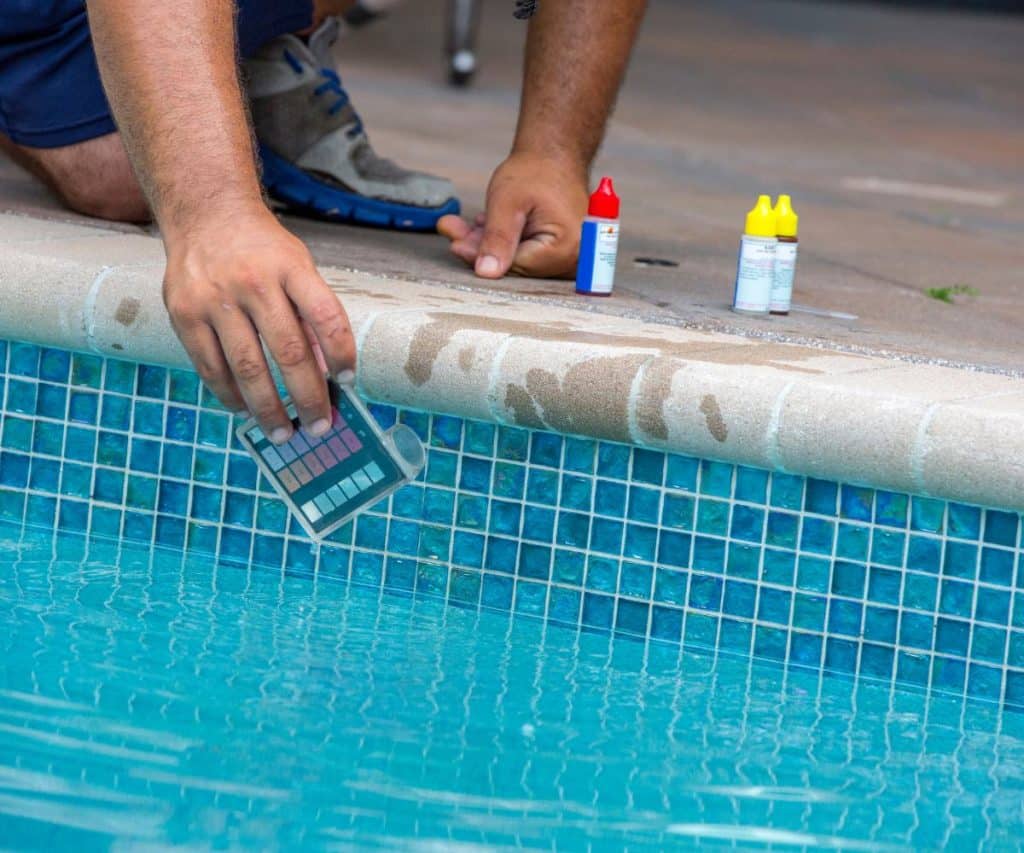
These levels in your pool should be between 80-120 ppm. Low alkalinity levels can cause the pH level to fluctuate. In contrast, high alkalinity levels can cause the water to become cloudy, leading to scale formation on pool surfaces and equipment.
To raise the level, you can add sodium bicarbonate. While to lower the level, you can add muriatic acid or sodium bisulfate.

Calcium hardness levels in your pool should be between 200-400 ppm. Low calcium hardness levels can lead to pool surfaces and equipment corrosion. At the same time, high calcium hardness levels can cause scaling on pool surfaces and equipment.
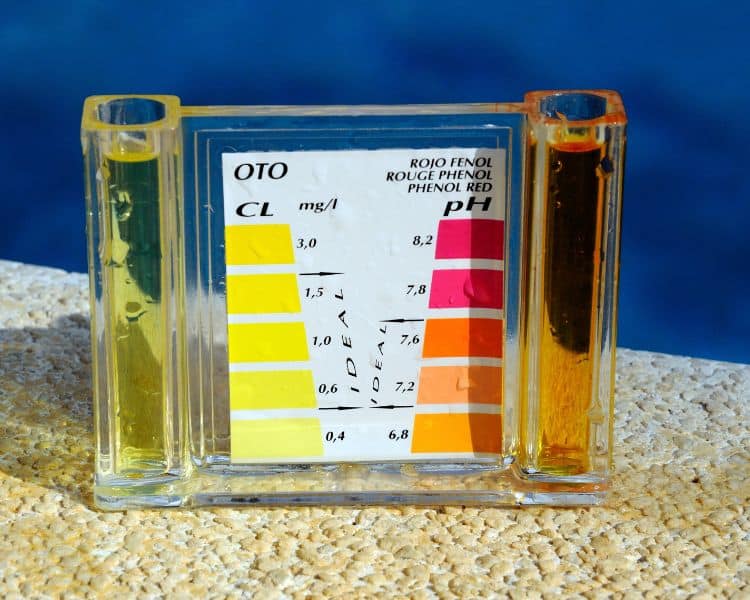
Chlorine levels in your pool should be between 1-3 ppm. Low chlorine levels can lead to the growth of harmful bacteria and algae in your pool. High chlorine levels can cause skin and eye irritation and bleaching of pool surfaces and swimwear.

Water that appears cloudy or hazy may indicate a chemical imbalance in your pool.

High chlorine or other chemicals can cause skin and eye irritation, redness, and itching.

A strong chlorine odor in your pool may indicate that the chlorine levels are too high.

Water not adequately balanced can cause staining or corrosion of your pool’s surfaces and equipment.
You must test the water chemistry to determine if your pool’s water is properly balanced. Several pool test kits are available, including test strips, liquid, and digital test kits.
To test your pool’s water chemistry, you must follow the steps included in the test kit. Collecting pool water and then adding the reagent to the sample is necessary.
The color of the water is likely to alter. In the end, you’ll examine the color against the color chart in the test kit. This will help you find the chemical levels in your pool’s water.
It is recommended to test your pool’s water chemistry at least once a week, or more frequently if you have been using your swimming pool often. This will help you catch any imbalances before they become significant problems.
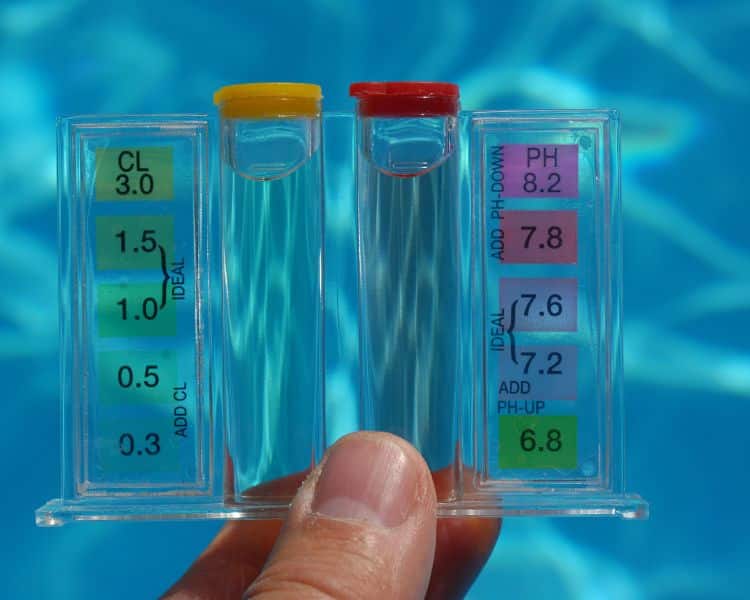
Maintaining balanced water levels:
Regularly test your pool’s water chemistry and adjust to keep the levels in the recommended range.
Prevention of water imbalances:
Avoid using products containing metals or other substances that can affect water chemistry. Regularly clean your pool to prevent the buildup of algae and other contaminants.
Importance of regularly testing your pool’s water chemistry:
Regular testing of your pool’s water is the best way to ensure that your pool water remains appropriately balanced. So be sure to test your water at least once a week.
Balancing the water chemistry in your pool is essential for a safe, healthy, and comfortable swimming environment. Regularly testing your pool’s water chemistry and making necessary adjustments can help maintain the quality of your swimming pool. Balancing the water chemistry can prevent skin and eye irritation, maintain clear water, and protect your pool’s surfaces and equipment from damage.
Finn’s Pool Services is here to help if you need assistance with water chemistry balancing. Our experienced technicians can provide you with the expertise and tools you need to keep your swimming pool safe and healthy.

Warm weather brings pool season — and for many families, that includes letting the dog join in on the fun. But a common concern among pet owners is whether chlorine
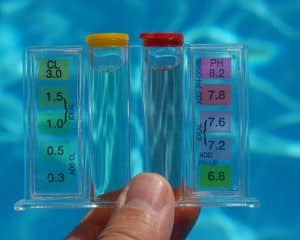
Are you struggling with water that looks fuzzy or muddy in your pool? Maintaining the sparkling clarity of crystal-clear pool water might seem daunting, but it’s simpler than it appears.
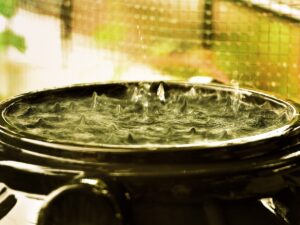
Rainwater can be both a valuable resource and a potential challenge when it comes to maintaining your pool’s pristine condition. Rainwater, while a natural replenishment source, can also introduce unwanted
